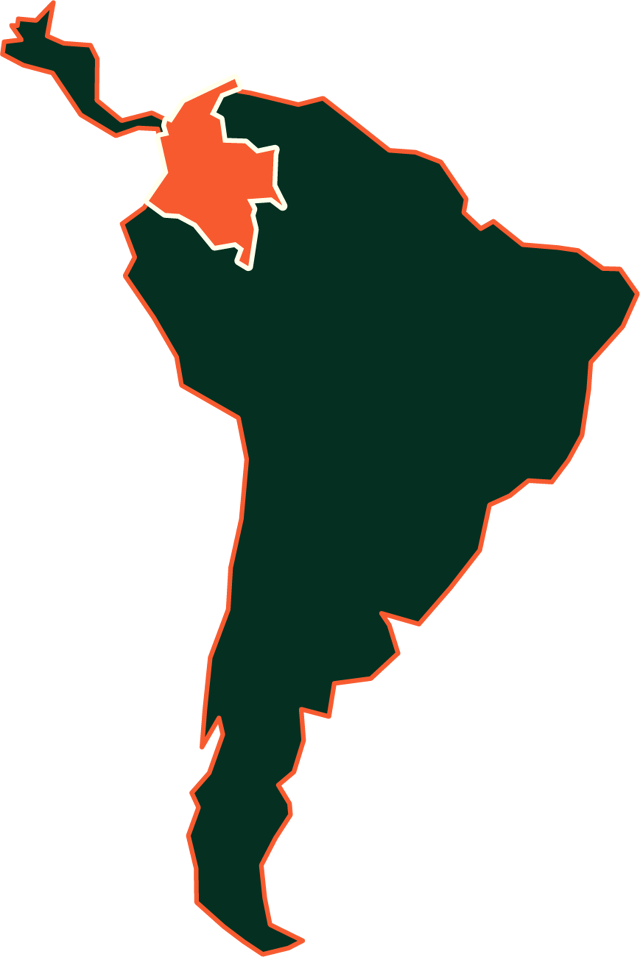Colombia
Neuigkeiten vor Ort
Steckbrief

Hauptstadt
Bogota Bereich
840.112ha Durchschnittliche landwirtschaftliche Fläche
1,56ha Geografie
A wide diversity of mountainous Erntezeit
Oktober - Januar Nebenernte
Mai - Juni Anzahl der Produzenten
600000 Anzahl der in der Industrie lebenden Menschen
540000 Prooduzierte Säcke pro Jahr
14000000

Der sektor im Land
Sektor
Colombia produces exclusively Arabica, because Robusta is neither supported nor authorized by the Colombian Coffee Growers Federation, the FNC. This means we cannot export Robusta because there can be no certificate of origin, and because no phytosanitary rules have been established for this type of coffee. Coffee production is the main source of employment in rural areas.
The coffee-growing regions are mountainous areas. 90% of producers have very small plantations (0.80 hectares on average). The average age of a grower is 53. Many producers practice mixed farming to diversify their income (chickens, eggs, etc.). Numerous local associations and cooperatives have been set up to help growers through the various stages of the supply chain: growing, harvesting, post-harvest processing, transport, packaging, projects and certification.
Geografie
Colombia is located at the north-western tip of South America and covers an area of 1,141,748 km². It is bordered by the Pacific and Atlantic coasts. It is crossed from north to south by the Andes mountain range, which divides into three branches near its southern end: the Cordillera Occidental, the Cordillera Central and the Cordillera Oriental. To the east of the Cordillera Oriental lie the Orinoco river, the Llanos plain and the Colombian Amazon. Colombia’s other mountain ranges include the Serranía del Baudó and the Sierra Nevada de Santa Marta. Six of their summits stand higher than 5,000 metres. The different climates are determined by the amount of rainfall. In the plains and lowlands (situated at an altitude of less than 500 metres), the average temperature is 25 °C. The mountains and valleys located at altitudes of over 500 metres have a wide diversity of climates. They can be very humid, rainy, dry, and even very dry. The country’s size and geographical diversity partly explain the great aromatic diversity and the different harvest periods.
Main actors
The Federación Nacional de Cafeteros de Colombia (FNC) was set up in 1927. It has played a determining role in the development, organization and promotion of Colombian coffee. Since its creation, a tax has been introduced for coffee exports known as the coffee contribution, which is managed by the FNC. It currently stands at USD 0.06 per pound exported. The Fondo Nacional del Café national coffee fund (FoNC) was founded in 1940. It is managed by the FNC and renewed every 10 years.
Kaffees von
Spottpreis
€/kg
Spottpreis
€/kg
Spottpreis
€/kg
Spottpreis
€/kg
Spottpreis
€/kg
Spottpreis
€/kg
Spottpreis
€/kg
